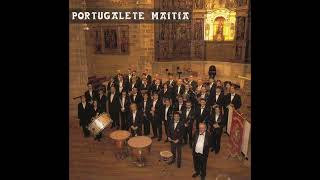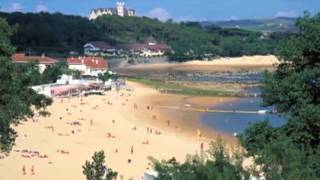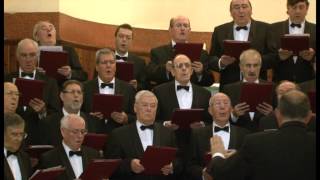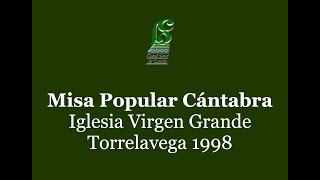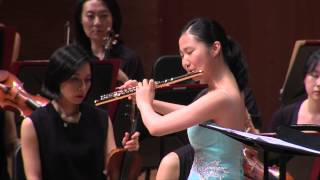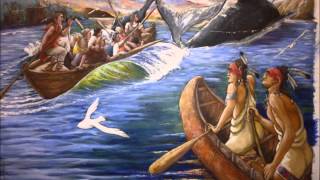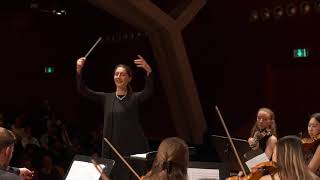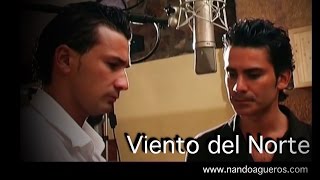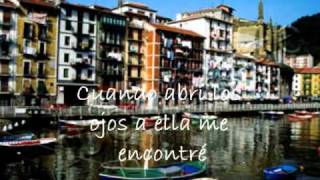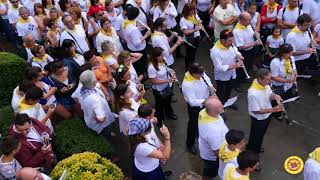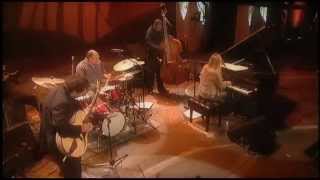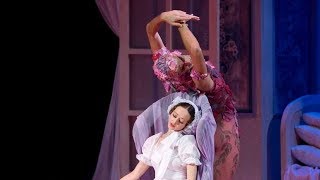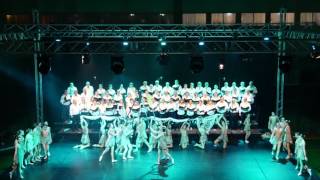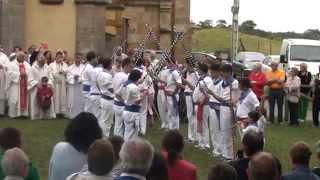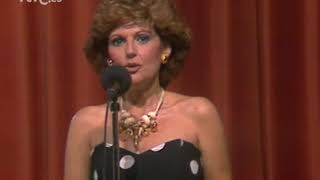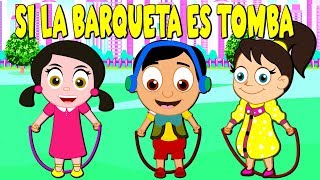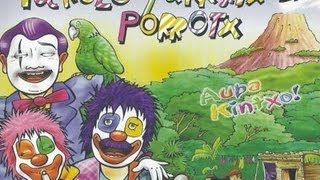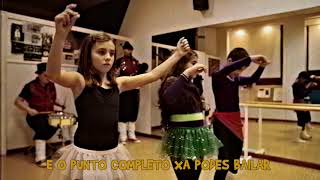Cantabria Day, also known as Mountain Day, is celebrated every year on the second Sunday of August.
On August 14, the Patron Saint Festivities of Ondarroa and Portugalete begin.
On August 15, the Catholic Church celebrates the day of the Assumption of the Virgin Mary.
Recommended music videos for initiation to classical music
Charles Gounod (1818-1893) was a French composer known to the general public for his Ave Maria , which we offer today. He was born in Paris and received his first classes from his mother until he enrolled in the Conservatoire . He was a very prolific composer with both sacred and profane works; among all, his opera Faust deserves special consideration. His influence on other French composers such as Bizet, Saint-Saëns and Jules Massenet is unquestionable. Even Debussy himself came to declare it "necessary" in that his aesthetics represented for that generation of Frenchmen a powerful counterweight to the overwhelming Wagnerian push .
Bach/Gounod 's Ave Maria is a composition based on the Latin text Ave Maria originally published in 1853. The piece consists of a melody by Gounod , designed to be superimposed over Prelude No. 1 in C Major, BWV 846, from the Bach/Gounod Book I of The Well-Tempered Clavier by JS Bach written 137 years earlier. Along with Schubert 's Ave Maria , Bach-Gounod 's Ave Maria has become a fixture at wedding masses, funerals and celebrations of a different nature. There are very different arrangements for guitar, violin, string quartet, piano, cello, trombone ensemble, opera singers, choirs... that have recorded and/or performed it in public hundreds of times during the 20th century . Today it is offered to us by the Romanian soprano Angela Gheorghiu .
The Festivities of San Roque have been celebrated in Portugalete (Bizkaia) for centuries. They begin on August 14 with the chupinazo, the reading of the proclamation and the Tamborrada Portugaluja . On the 15th, the day of Our Lady , starting at eight in the morning thousands of people in the company of the Municipal Music Band walk the streets of the Villa for two hours singing the Portuguese Diana. On the 16th San Roque , in the morning, the traditional procession from the Town Hall to the hermitage of the saint; at 6 pm the Great Descent , through the streets of the town to the Plaza del Solar where the traditional Dance of the Hour will take place with the Municipal Band . The day of San Roquillo (day 17) is the day of the children. At night the Jarrilla will be burned, ending the festivities.
Portugalete Maitia is the song, with lyrics by Iñaki Arenaza , composed by the director of the Municipality of Portugalete, Joseba Sáenz Ortuondo, to open the Portuguese Tamborrada and which gives the title to the CD released by the Portugalete Municipal Music Band in commemoration of the centenary of its foundation; it was recorded with the collaboration of the main choral groups of the Villa . I (0´00´´) PORTUGALETE MAITIA (Santa María Choir, Friends of the Tamborrada and Municipal Band) .-. II (4´26´´) LA LLANISCA (Friends of the Tamborrada and BM) .-. III (7´19´´) VIRGIN OF THE GUIDE (Friends of the Tamborrada and BM) .-. IV (9´17´´) THE AIROSO (Friends of the Tamborrada and BM) .-. V (12´55´´) PORTUS GALEOTE (Barbis Taldea and BM) .-. VI (19´56´´) BOTECITO (Otxote Danok Bat and BM) .-. VII (23´30´´) TO PORTUGALETE (BM) .-. VIII (26´34´´) AUPA PORTU (Orfeón Jarrillero del Elai Alai and BM) .-. IX (30´45´´) THE BURIAL OF THE SARDINE (Coral Pleamar and BM) .-. X (34´43´´) BUENAVISTA NEIGHBORHOOD (Choral Santa María and BM) .-. XI (40´12´´) EUSKAL HERRI POLITA GORA (Otxote Danok Bat and BM) .-. XII (43´00´´) PORTUGALETE NOBLE VILLA (Barbis Taldea and BM) .-. XIII (48´28´´) DIANA PORTUGALUJA (Portuguese choirs and BM).
The Day of Cantabria , traditionally known as Día de la Montaña , is celebrated on the second Sunday of August in the Cantabrian town of Cabezón de la Sal and is a day of exaltation of the customs, traditions and ethnographic values of the community. During this time, thousands of people fill the streets of the town around the main activities, which revolve around folklore, rural sports, handicrafts and a market of typical products, a parade of floats and carts, and the tudanco cattle parade . All of this enlivened with typical Cantabrian music and dances through uninterrupted demonstrations by groups of dancers, picayos, tambourine players, soloists, rebellionists, piteros, bagpipers, troubadours, rounds of waiters, etc. The celebration has been declared a Festival of National Tourist Interest since 1972.
The mountain song or mountain tune is a folk musical genre of a lyrical nature developed in Cantabria , the main lyrical expression of oral tradition sung in Cantabria along with the marzas, the jota montañesa (sung), the picayos, the aguinaldo and the romances . The Mountain Song is interpreted mainly "a capella", although sometimes an autochthonous instrument is used to accompany it, such as the mountain pitu and drum, the bagpipes , the tambourine or the castanets (tarrañuelas). Apart from being interpreted individually, it is also common to perform it in collective formations through the "Chorals" or the "Cantos de ronda". Today we offer the tune Qué bonito es Santander in interpretation by Avelina Fernández .
The Andra Mari Festivities are the patron saint festivities of Ondarroa (Bizkaia) in honor of the Virgen de la Antigua , patron saint of the town. It begins on the night of August 14 to 15 with the descent of Leokadi from the church of Santa María and ends on the 17th, Arrantzale Eguna (“Fisherman's Day”), which is the big day together with the 15th, the day of the Virgin and in the middle, on the 16th of San Roque , "day of the crews". All this with parades of txistularis, tamborradas, giants and bigheads, a marmitako contest, the kukaña, the geese, cycling races, soccer matches, dances, concerts by rock groups, popular meals, brass bands, fireworks, mariachi concerts or special area for txikis activities. In 2002, the Gazte Eguna (Youth Day) was incorporated for August 13.
The Orfeón de Sestao was founded in 1906 as the Parish Choir of the Church of Santa María with Vitorio Epalza as director, obtaining first prize in Bilbao in 1944. In 1973 they recorded two albums in Madrid with the Columbia label; one with sacred songs and another with Basque choral music. In 1975, as its presence at liturgical functions was not necessary, it became independent from the Parish; Since then his performances have multiplied, performing alone or with different artists and high-level professional formations. The Orfeón is made up solely of men, usually singing in four low voices.
Today they offer us the Boga boga , a popular song that mentions the exit to the sea of the arrantzales of Ondarroa , arranged by Jesús Guridi .
Recommended classical music videos
Nobel Sámano (1933-2019) is probably the most important contemporary composer of Cantabrian popular music. He began his piano studies as a child under his father's tutelage, which later led him to complete it with composition and conducting. A life dedicated to music and dignifying the folklore of Cantabria . Considered one of the most outstanding figures in the musical creation of his land, he combined his facet as a composer with an entire career as a pianist, offering concerts in venues in Paris, Madrid and Barcelona , among other large cities. His work, as a composer, includes pieces for solo piano, songs with piano and choral music, as well as orchestral works such as the Fantasy on Cantabrian themes . He died in his hometown of Torrelavega at the age of 85.
One of his best-known works is the Cantabrian Popular Mass , which we offer today and which premiered on February 8, 1997 at the Santander Cathedral ; This composition has been represented in the cathedrals of León and Santiago and in reference churches in Madrid, Barcelona, Pamplona or Cuenca , among other venues, as well as in numerous churches and auditoriums in Cantabria . The work, without faithfully following the liturgical text, does so in a rather sentimental, traditional, manners and folkloric way. The score is considered one of the most important contributions to the popular religious-style polyphonic repertoire in Cantabria in the 20th century . (Text taken from the article by Lola Gallardo in the Diario Montañés ).
Today it is presented to us by the Escolanía de Laredo , the Coral Salvé de Laredo , the Ronda Valle de Camargo Choir , the Luétiga Instrumental Group and the Ntra Sra de Covadonga Dance Group , all of them under the baton of maestro José Luis Ocejo .
Wolfgang Amadeus Mozart (1756-1791) is considered one of the three giants of musical composition along with Bach and Beethoven . Child prodigy born in Salzburg , at the age of six he mastered the keyboard and the violin and began to compose. His father, Leopold exhibits him in exhausting tours of different European courts. A prolific composer (more than 600 works written from the age of five until his death), he cultivated all kinds of musical genres: piano works, chamber music, symphonies, concertante works, choral works, operas... each and every one of them, masterpieces of its gender. His operas The Magic Flute, Don Giovanni, Cosí fan Tutte, and The Marriage of Figaro are among the 10 most performed operas in the world. He died in Vienna at the age of 35.
The flute is a type of musical instrument that, due to the simplicity of its construction, may be one of the oldest instruments. The name flute seems to come from the Latin flatulare , which means to blow, to inflate. The body of the instrument has holes that, by opening or closing them, changes the length of the vibrating air inside the tube. The holes are sometimes covered directly with the fingertips; in others, with keys. Although it can be made of wood or metal, the flute is classified within the woodwind family , since in woodwind instruments, sound is produced by vibrating one or more reeds or instrument sections; while in brass instruments, trumpet type, it is the lips that vibrate to produce sounds.
Jesús Guridi (1886-1961) was born in Vitoria-Gazteiz into a musical family. After the family moved to Madrid , Guridi entered the Conservatory ; However, the economy did not go well for the parents, so they moved to Bilbao , where thanks to the patron, the Count of Zubiría , he was able to move to Paris and enter the Schola Cantorum to study piano, organ, counterpoint and composition. After finishing his studies, he went through Belgium , Cologne and Munich to deepen them. Back in Bilbao , at the age of 21, he took over as director of the Bilbao Choral Society , a job that he combined with that of organist in the Basilica (now the Cathedral) of Santiago . In 1939 he returned to Madrid , as director of the Conservatory , where he would die at the age of 75.
Eusko irudiak (Basque Paintings) is a set of three prints by Guridi whose action takes place in the fishing port of Ondarroa , Bizkaia. The FIRST TABLE (0´00´´) describes life in the port: with the women sewing the nets, and the men embarking, while the Boga boga is heard. In the SECOND TABLE (5'44'') the storm appears with the restlessness that it produces until the weather subsides. In the THIRD TABLE (10'32'') the sailors arrive safely at the port while they are received with joyful songs and dances, thanking the Most High for the event. The work ends with the song of the Boga boga , which places us back in Ondarroa .
The version is by the Orfeón Donostiarra with the Euskadi Symphony Orchestra directed by maestro Miguel Ángel Gómez Martínez .
Johann Strauss Jr. (1825-1899) was an Austrian composer, son of Johann Strauss and brother of composers Josef Strauss and Eduard Strauss ; Known during his lifetime as "the king of the waltz", he was an essential factor in its evolution and sophistication, from being a peasant dance to an entertainment dance for the Imperial Court . He is the best known of the family for his waltzes , his polkas , and his marches; composer, in addition, of several operettas . His father wanted to prevent his son from going through the straits of a musician's life, so it was his mother who helped him and encouraged him to focus on music. His work forms the basis of the repertoire offered annually at the Vienna Philharmonic Orchestra 's New Year's Concert .
The waltz (from Germanism Walzer , a term from the German verb walzen, 'to turn, to roll') is an elegant ballroom dance, documented in its final form since the end of the 18th century . It is the evolution of an ancient dance from the 12th century , originally from Tyrol (Austria) and southern Germany . The waltz conquered its rank of nobility in Vienna during the 1760s, quickly expanding to other countries. Some authors believe that the waltz originated from the volte or volta, a 3-beat dance practiced during the 16th century . The word waltz was born in the 18th century , when this dance was introduced in opera and ballet. Its most significant feature is that its time signatures are 3/4.
The Emperor's Waltz , op. 437, is a waltz composed by Johann Strauss (junior) in August 1889 on the occasion of the visit of Kaiser Wilhelm II of Germany to Franz Joseph I , in Austria . It begins with a soft march that builds to a crescendo as the main melody is introduced. This remains in the background throughout the waltz. As the finale approaches, a cello solo repeats the first structure, before ending with a trumpet fanfare, accompanied by a timpani. Today the VSMF Symphony Orchestra under the baton of the Turkish maestro Nisan Ak offers us the Emperor's Waltz by Johann Strauss Jr.
Recommended music videos for all tastes
Nando Agüeros (Torrelavega, 1976) is a "popular song worker" who triumphed in northern Spain . "Four years ago I closed the Torrelavega pub that I had - it was called Worse for the Sun , like Sabina 's song - because business was going down and my musical career was on the up." In 2006 Nando composed the song Viento del Norte , which he brought to light with his brother Sergio and which we offer today as a tribute to Cantabria . The song was an immediate success and, in a few years, it has acquired enormous popularity, going so far as to be proposed as the official anthem of the Community of Cantabria .
Nerea Sáenz Artetxe grew up surrounded by music. His father and uncle formed the Ondarruko Zintzoak group in the 1970s and there was always a song playing at home; how not to take over. With very varied influences, from classical music, author song, jazz, Brazilian, to pop , he created the bands Estación Norte and Marte Menguante . She published her album Estación Norte in 1999 with the EMI label and has collaborated as a composer for the television series " Compañeros" and for Cartoon Network .
The song Tierra , dedicated to Ondarroa, speaks of love and gratitude to the roots, to the land, to the family... With very local references such as those of Zubi Zahar , the Alameda , the sirens of the port... and with lines interpreted with emotion, this very personal song manages to connect with a global feeling of longing that captures whoever listens to it; It also has a very careful production and a very folk flavor that introduces us body and soul to Ondarroa with the graphic report by Leire Larrinaga .
The Portuguese Diana with lyrics by Pedro Heredia and music by Marcelino Amenábar (first conductor of the Portugalete Municipal Band ), is a fusion of the well-known military diana and the composition A la verbena, also by maestro Amenábar . In the early hours of the morning of August 15, thousands of people gather in front of the City Hall to carry out the Diana portugaluja , whose objective is to wake up all the jarrilleros in order to invite them to the party. It is attended without any instrument since the one in charge of marking the sounds is the Municipal Music Band . After two hours walking through the streets of the Villa, you arrive at Plaza de la Ranchería , where people taste the traditional garlic soup.
Diana Krall (Nanaimo, November 16, 1964) is a Canadian jazz pianist and singer. He has sold more than 6 million records in the United States and more than 15 million worldwide. In total, she sold more records than any other jazz artist during the 1990s and 2000s. She rose to worldwide fame in 2004, and on December 11, 2009, Billboard magazine named her the Jazz Artist of the Decade 2000-2009. . She is the only jazz singer with eight albums to debut on the top of Billboard 's Jazz Albums. To date, he has won three Grammy Awards and eight Juno Awards. He has also earned nine gold, three platinum, and seven multi-platinum records.
Recommended peculiar videos
The Specter of the Rose , which we are suggesting today, is a ballet work created by Michel Fokine for a mixed pair of dancers to music written by Carl Maria von Weber for piano. Invitation to the Dance is the title of the piano work that Weber wrote and that would later be orchestrated by Hector Berlioz . Today it is offered to us by The Russian Ballets .
Portus Galeote . As a result of the collaboration between the Municipal Band and the different popular associations, this song arises with lyrics by Juanjo Tellaetxe , original music by the director of Barbis Taldea , Txema Lorente, and arranged for Band and choir by the director of the Band Joseba Sáenz Ortuondo . In the video that we present today, the staging is enriched by the choreography of Pilar Agirregomezkorta and performed by her Classical Ballet Academy . At the baton, the current head of the Municipal, Jabier Ituarte Aulestia .
The Dance of the Lances is one of the most deeply rooted samples of Cantabrian folklore in the region, which has its origins in the 16th century . It is a dance that is celebrated in honor of the patron saint of Ruiloba , the Virgen de los Remedios , on July 2, the day of her festival. Only men participate in the dance, among which one of them stands out, the baseball player , who, equipped with a baton, leads the group in the center, while the rest perform a dance using long sticks, the spears, according to the order of the rabonero . or zaguero , who indicates the variants of the dance using castanets. The dance that we offer today is declared by the Government of Cantabria to be of intangible cultural interest along with eight other Cantabrian dances, because they are dances that are part of the cultural heritage of the Autonomous Community .
Basque dances (in Basque, Euskal Dantzak ) are a very important part of Basque culture and the fundamental part of its folklore. Each historical territory, or province, has its own and each town also has its own that is customary to dance at its main festivals. Among the most outstanding dances we will mention the pilgrimage or square dances , based on the dances that were celebrated in the pilgrimages and whose participation was popular and spontaneous. The sword dances that have an obvious parallelism with the European ones of the same type. The end-of-festival dances that are performed to mark the end of some festivities, the end of one cycle and the beginning of another.
Today we present a small interlude of these dances prepared and offered by the dancer and choreographer Luis Exaburu, Latxanbre , with his formidable group Txanpa.
Recommended music videos for children
Various Wikipedia articles have been used to write these texts.
The texts of Videomusicalis are written in Basque, Spanish and English.






